Chrysan closed at the end of March 2013, after just six months.
Chrysan opened in September 2012, part of the Hakkasan group, serving Japanese food rather than their usual Chinese style. The restaurant has been opened in collaboration with Yoshihiro Murata of Kikunoi in Kyoto. The restaurant itself is just yards from l’Anima in Snowden Street. There is a bar area to the right as you enter, and a corridor leading through to the main dining room, through which you can watch the chefs at work in the kitchen. The head chef is Daisuke Hayashi, who trained at Kikunoi from the age of 18 before opening Kikunoi Aksaka in Tokyo in 2004. He later moved to the luxury Windsor hotel in Toya, becoming responsible for the two Japanese restaurants there at that time (this hotel now hosts outposts of Kyoto's wonderful Kitcho and of Michel Bras). He then came to London and worked at Sake No Hana (which Hakkasan Group now owns) before opening Chrysan.
The dining room is smart, with dark stone tiles, well-spaced tables and a window along one wall partially covered by a wooden screen. At lunch there was a bento box style offering at £39, whist on the à la carte starters ranged from £7.50 to £17.50, main courses £16 to £28 and desserts at £6. There was a list of sake and also a wine selection, ranging in price from £27 to £770, with mark-ups that reflect the City location. Example wines were 2011 De La Negly Clape Brise Marine Blanc at £33 for a wine that you can find in the high street for about £11, Paul Pillot Les Charmois St Aubin 2010 at £72 for a wine that retails at about £21, and Lynch Bages 1999 at £285 for a wine that will set you back about £102 in the shops. Mark-up levels stayed high further up the list too, with Mouton Rothschild 19785 at £788 for a wine that retails at £332. Water was a hefty £4.40 for a bottle.
Miso soup had good quality stock, in this case with pieces of pork belly added (a vegetarian version was also available). The lunch arrived in two glass boxes. In the first box was a selection of little dishes: sea bream was served with parma ham, Cornish crab and fine beans. Duck confit was served with mixed beans flavoured with sesame and also marscapone cheese, which tasted as strange as it sounds. Simmered vegetables were served with dashi and were reasonable but unexceptional; better was lobster tail with tomatoes, avocado and miso. This was a tricky set of things to mark, ranging from good, such as the crab, to very ordinary (13/20 average).
In the second box was a range of sushi: salmon was served with braised octopus with a powder of egg yolk and minced tofu flavoured with soy and sesame oil; the salmon had little taste and the powdery texture seemed just distracting. Japanese style omelettes were served within a roll of dried tofu, whilst beetroot was used as the roll for eel maki, the eel flavour lost amongst the beetroot. A prawn and egg omelette within box sushi roll was better. However there were three more classical pieces of sushi, and here was where the real problem lay. The sushi rice was, bizarrely, fridge cold rather than as it should be i.e. at body temperature or at least room temperature. This seems to me a pretty strange slip for an experienced Japanese chef; I have never had sushi rice served to me cold in Japan. A further issue was the fish itself. Despite using the respectable fish supplier Atari-Ya, the salmon was tasteless, sea bream was reasonable, and the tuna was big-eye tuna, a sub-species with slightly higher fat content than yellow fin tuna, but not what a top class sushi restaurant would serve. The tuna did not seem of particularly good quality to me, so in combination with the cold rice this made for disappointing sushi (11/20). It is possible to get much better quality fish than this in London, as can be tasted at the nearby Sushi Tetsu. Even the wasabi was just paste rather than real grated wasabi root; given the prices charged here, would it be too much to expect the real thing?
The main course beef was of much better quality, in this case Irish black Angus beef, aged just 2-3 weeks, and supplied by the excellent butcher O’Sheas of Knightsbridge. I have tasted much better beef from the same supplier elsewhere (such as at Hedone) but still this was a nice piece of meat with a reasonable amount of fat content, simply grilled (14/20). This was a reassuring dish after the disappointment of the sushi.
Service was classy, as is usually the case with Hakkasan restaurants. My young waiter (named Kenta) was of Japanese origin, and could answer every question I had about the food without reference to the kitchen. The bill came to £49 with just mineral water to drink, and no dessert or coffee. This is quite a lot of money for what was delivered. Japanese food is all about showing off high quality ingredients, which admittedly is a challenge in the UK as getting genuinely top ingredients, especially vegetables, is much harder than in Japan. Nonetheless, the sourcing could have been better here, and where more “western” tastes were introduced, such as with the Marscapone cheese, they did not work, at least not to my taste. The setting and service are as elegant as one might expect, but the food at this lunch was far more erratic in standard than I was hoping for. Admittedly it was early days for the restaurant when I visited, but the kitchen seems to me to have a lot of work to do at this stage if it is to live up to the expectations of its backers.













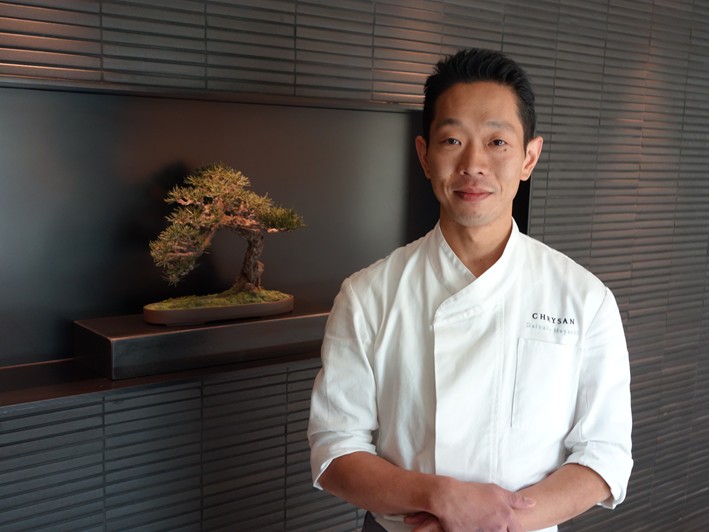
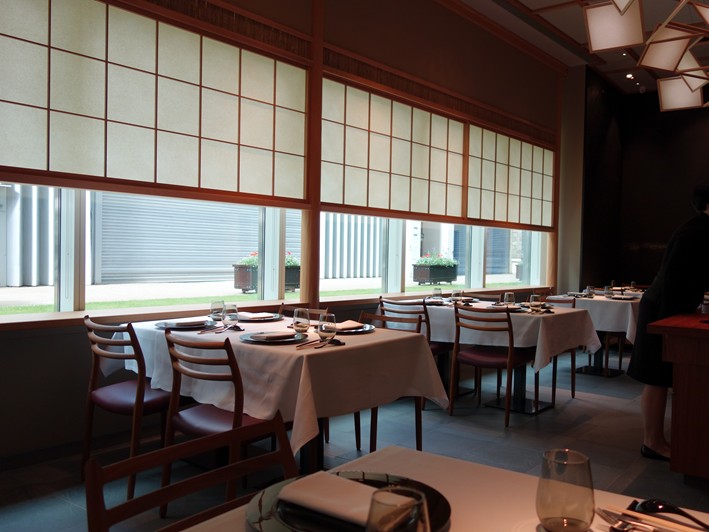
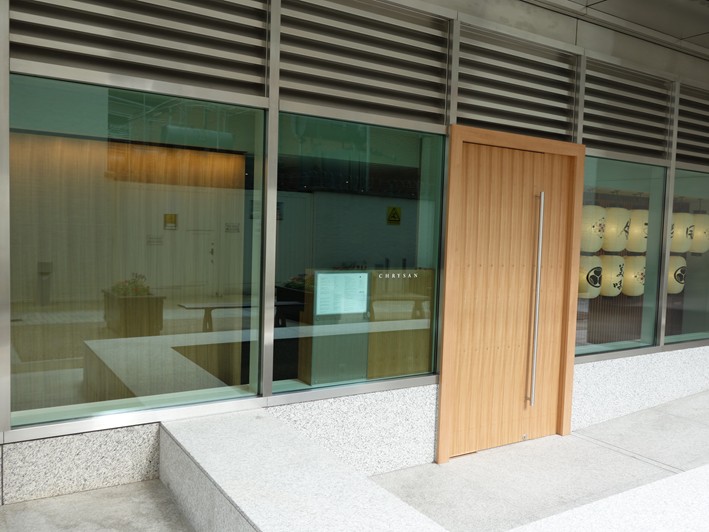
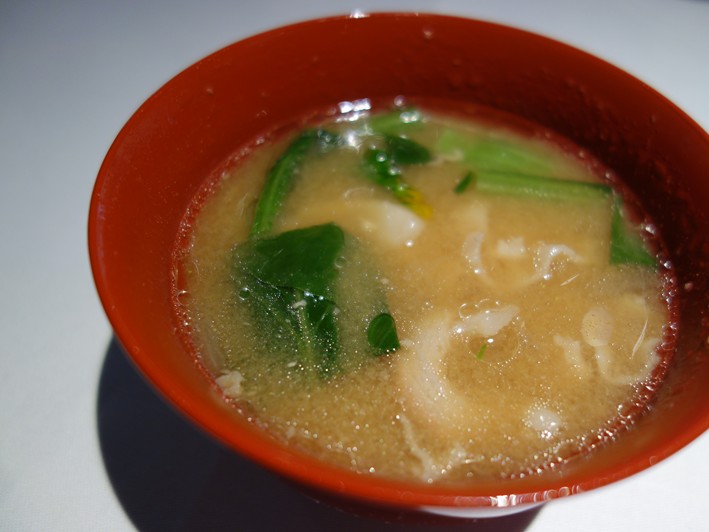
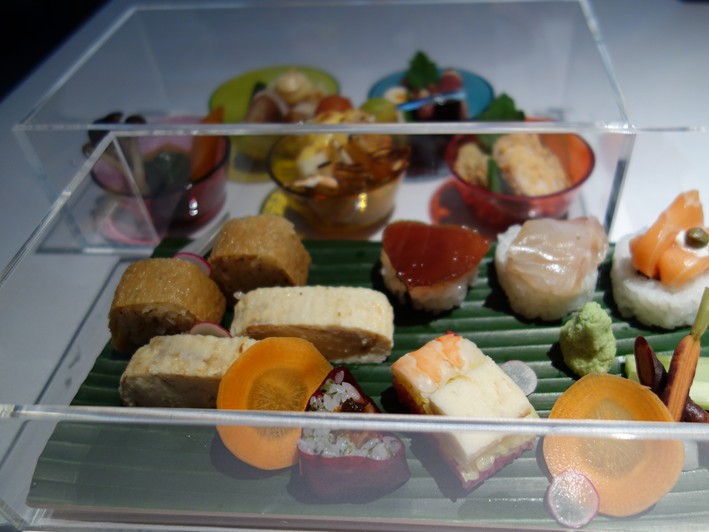


Semi
Murata is best known for kaiseki cuisine (a highly ceremonial menu of small courses), although the concept of Chrysan has been adapted to western sensibilities – allowing diners to choose between the formal seven-course banquet and a more westernised carte. My question is: This adaptation attitude is really misrepresenting japanese haute cuisine badly! I also visited Kikunoi and was served the "western menu" without asking me and was disappointed. Every dish was exactly the ones in his book. I traveled to Kyoto to taste something that was not in the book and was hoping for an authentic experience. I felt the food was also average and had eaten in other restaurants much better and interesting things. Ryugin for example is flawless in flavour and presentation using modern techniques but not loosing the essence of Japanese cuisine. I feel the soft cheese and other experiments on Crysan's manu seem amateurish and lost. It is really disappointing. I received also the transparent plastic box of many items and found it confusing. My favourite of the meal was the tarte tatin. Otherwise left a bit disappointed and felt it was overpriced to.
Yuuki
Andy - have you tried Ikeda near Bond Street? Family run and very good food. Very decent and perhaps one of the best in London at the moment.
London Food Freak
As you know, Andy, I had a similar experience with the sushi. The thing is - putting Sushi Tetsu to one side for a moment as that is clearly the best in London - any half decent sushi restaurant in London smashes the quality of the sushi in Chrysan. I struggle to get my head around it when you consider the people supposedly involved in sourcing and selecting the fish.